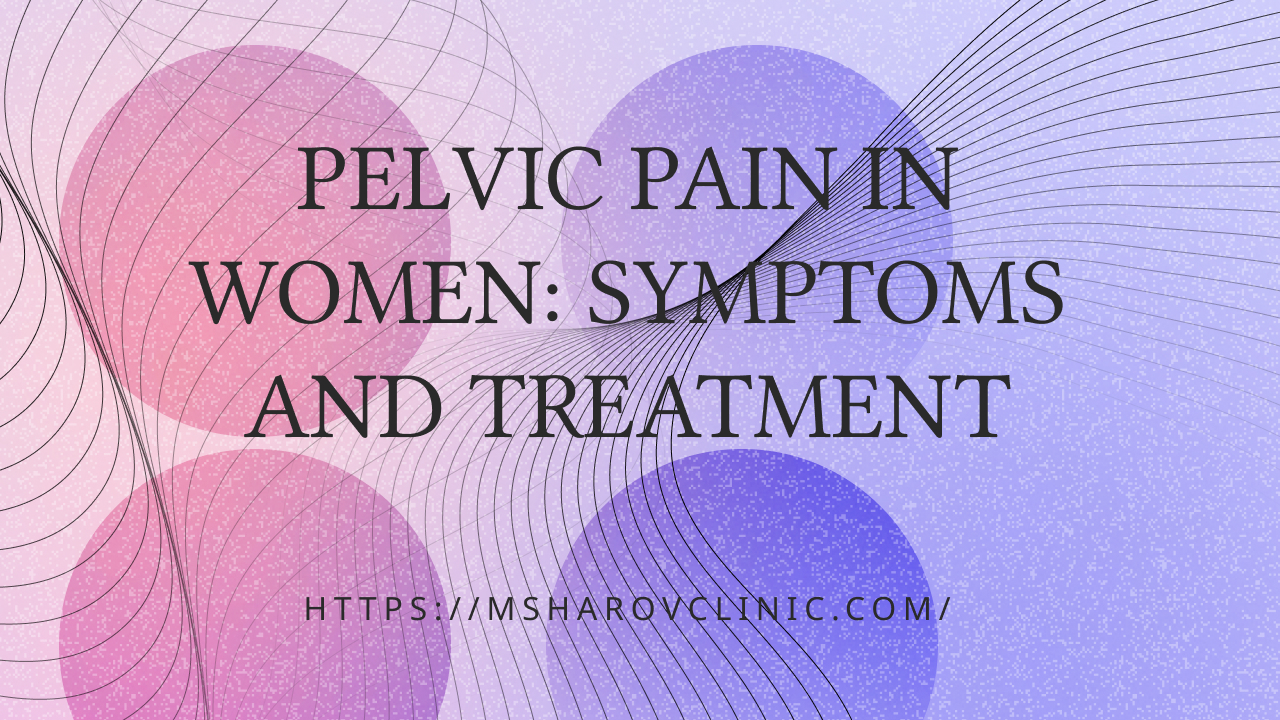Pelvic pain in women can be a manifestation of various diseases. It is often accompanied by other symptoms and can significantly affect the quality of life. Let's consider the most common causes, symptoms, and possible treatments for pelvic pain in women.
Pelvic Pain in Women: Symptoms and Treatment
Causes of Pelvic Pain
Gynecological Causes:
Endometriosis: characterized by the presence of endometrial tissue outside the uterus, which can cause pain.
Inflammatory diseases of the pelvic organs: infections of the uterus, ovaries, fallopian tubes.
Ovarian cysts.
Fibroid tumors of the uterus (myomas).
Ovulatory pain.
Urological Causes:
Urinary tract infections.
Cystitis – inflammation of the bladder.
Gastroenterological Causes:
Irritable bowel syndrome (IBS).
Inflammatory bowel disease.
Musculoskeletal Causes:
Pathologies of the lumbosacral spine.
Myofascial pain syndromes.
Symptoms
Pelvic pain can vary in intensity and character, including:
Constant, dull or aching pain.
Acute, stabbing or cramping pain.
Pain that increases with certain actions, such as urination or defecation.
Associated symptoms like discharge, menstrual cycle disturbances, pain during intercourse.
Diagnosis
The diagnosis of pelvic pain includes:
Taking medical history and physical examination.
Ultrasound examinations of the pelvic organs.
Blood and urine tests.
Laparoscopy in some cases.
MRI or CT scans to rule out other causes of pain.
Treatment
Treatment depends on the cause of the pain and may include:
Medication:
Anti-inflammatory and analgesic drugs.
Antibiotics if there is an infectious process.
Hormonal medications for treating endometriosis or myoma.
Physiotherapy:
Heat therapy, massage.
Exercises to strengthen pelvic muscles.
Surgery:
Removal of tumors, cysts, or endometrial lesions.
Correction of pathologies affecting the structure of the pelvic organs.
Psychotherapy:
Help in managing chronic pain and stress.
Pelvic Pain in Women: Symptoms and Treatment
Causes of Pelvic Pain
Gynecological Causes:
Endometriosis: characterized by the presence of endometrial tissue outside the uterus, which can cause pain.
Inflammatory diseases of the pelvic organs: infections of the uterus, ovaries, fallopian tubes.
Ovarian cysts.
Fibroid tumors of the uterus (myomas).
Ovulatory pain.
Urological Causes:
Urinary tract infections.
Cystitis – inflammation of the bladder.
Gastroenterological Causes:
Irritable bowel syndrome (IBS).
Inflammatory bowel disease.
Musculoskeletal Causes:
Pathologies of the lumbosacral spine.
Myofascial pain syndromes.
Symptoms
Pelvic pain can vary in intensity and character, including:
Constant, dull or aching pain.
Acute, stabbing or cramping pain.
Pain that increases with certain actions, such as urination or defecation.
Associated symptoms like discharge, menstrual cycle disturbances, pain during intercourse.
Diagnosis
The diagnosis of pelvic pain includes:
Taking medical history and physical examination.
Ultrasound examinations of the pelvic organs.
Blood and urine tests.
Laparoscopy in some cases.
MRI or CT scans to rule out other causes of pain.
Treatment
Treatment depends on the cause of the pain and may include:
Medication:
Anti-inflammatory and analgesic drugs.
Antibiotics if there is an infectious process.
Hormonal medications for treating endometriosis or myoma.
Physiotherapy:
Heat therapy, massage.
Exercises to strengthen pelvic muscles.
Surgery:
Removal of tumors, cysts, or endometrial lesions.
Correction of pathologies affecting the structure of the pelvic organs.
Psychotherapy:
Help in managing chronic pain and stress.
If you are experiencing pelvic pain, we can offer you a consultation with a gynecologist, or, if necessary, with specialists from related fields.

